-
Lemon and ginger cake, rough seas, and a budding career as a sommelier
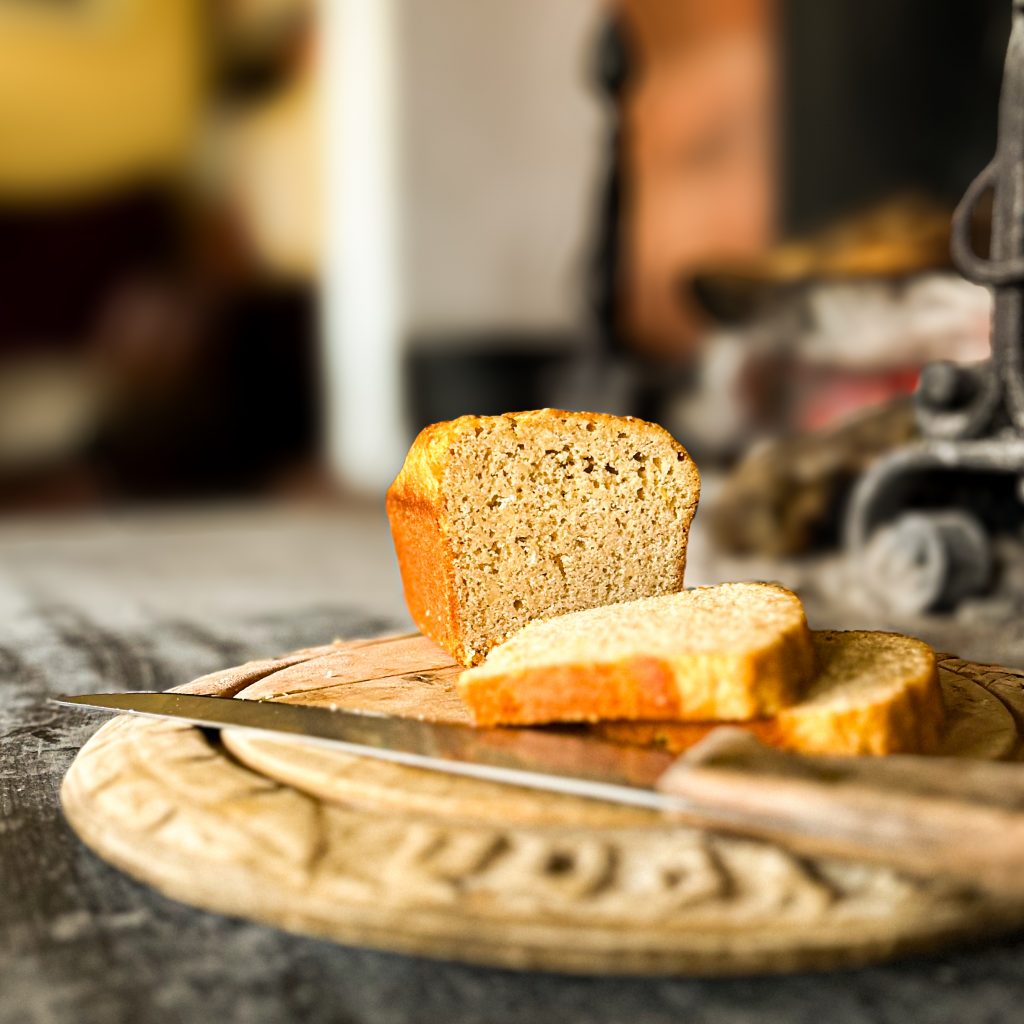
Lemon and ginger cake It will come as no surprise that my trip back to London with Léo in early December was not without incident. I spent the night on the overnight ferry from St Malo clinging to the bed for dear life, convinced that the rough seas were about to fling me onto the floor. When I mentioned to Léo the next morning how choppy the crossing had been, he told me it had been as still as a millpond. As I didn’t believe him, this was later confirmed by a steward who said, ‘Maybe you had a bad dream, Madame.’ He didn’t actually add ‘you complete and utter basket case,’ but it was very much implied.
It’s funny how the brain maps places and then stubbornly refuses to update them. In London we went shopping in a store I used to visit with my mother when I was very little. We always left via a side door, so naturally that is how I decided we had to leave over 50 years later. Léo told me several times, quite sternly, that it was now a fire exit and that I must not push the door. But my five-year-old self, still apparently alive and well inside me, did push it; an ear-splitting fire alarm was immediately set off throughout the vast store and security personnel started to run in all directions. A very embarrassed Léo explained: ‘I’m so sorry – my mother’s just a toddler in disguise.’
A budding wine expert
One of my finer moments came in the supermarket wine aisle. I must look as though I know my Merlot from my Pinot Noir, because no fewer than five people separately asked for my recommendations. My ‘expertise’ consists of knowing that I loathe rosé, having a son who is an Agricultural Engineer specialised in viticulture, and a husband with a wine cellar. I was there long enough for a queue to form, and felt quite disappointed when the supermarket failed to offer me a paid position.
This cake is delightfully zingy and excellent if you have a cold and sore throat.
Recipe for lemon and ginger cake
- 100g einkorn flour
- 100g white flour (obviously you can use 200g white flour)
- 2 teaspoons baking powder
- 1 teaspoon bicarbonate of soda
- 1 teaspoon cardamon powder
- 200g extra virgin organic coconut oil
- 150g cane sugar
- 4 large organic eggs
- 2 lemons, grated and juiced
- 1 tablespoon freshly grated ginger
Preheat the oven to 180°C. Sift the flours, baking powder, bicarbonate of soda and cardamon powder together and set aside. Melt the coconut oil and then add to the sugar in a mixing bowl. Beat with an electric mixer fluffy and then gradually add the eggs one at a time, continuing to beat. Add the grated lemon zest and juice as well as the fresh ginger, mixing well. Transfer the mixture to a buttered loaf tin and bake about 40 minutes, or until a skewer comes out clean. Remove from the tin and leave to cool.

Christmas lights in Portsmouth -
Gut-friendly French grated carrot salad and the firemen’s calendar
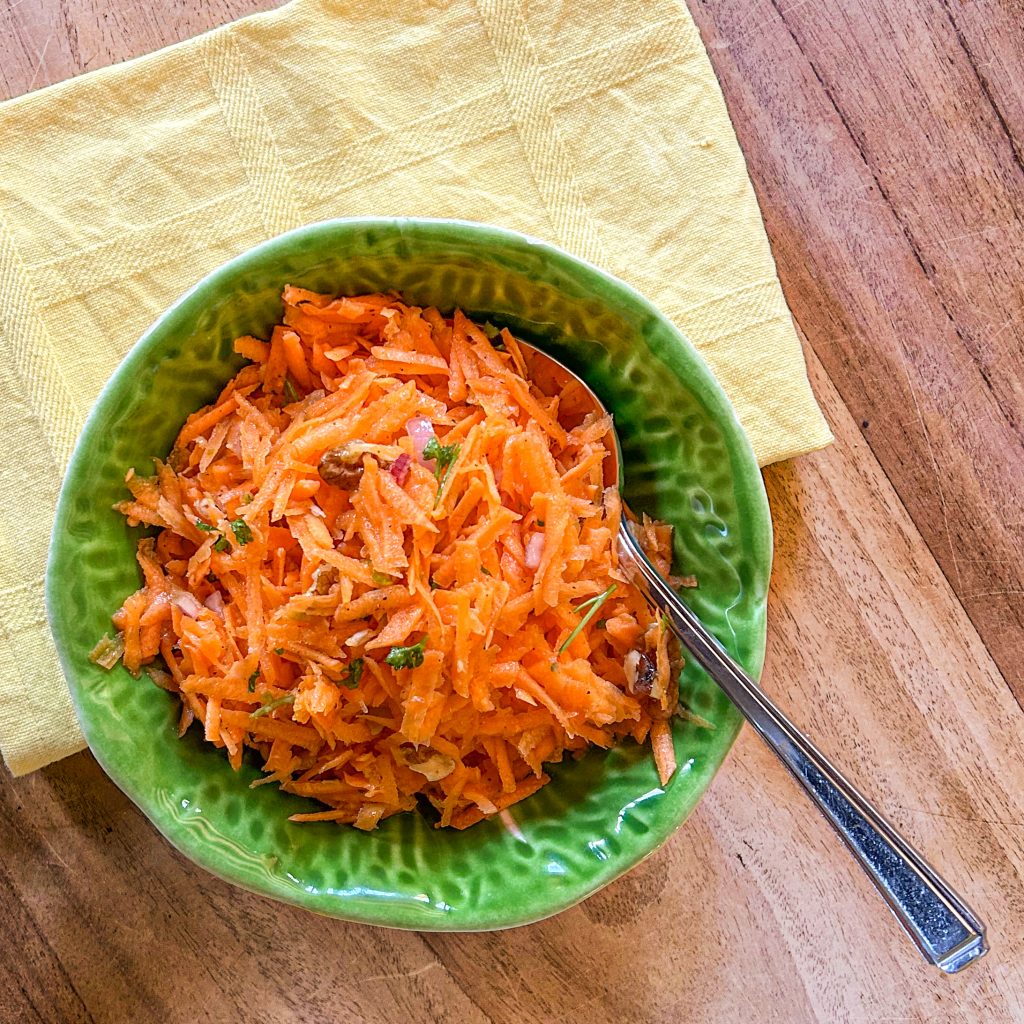
French grated carrot salad We currently have a guest staying who is particularly enamoured with the horses. Also the trees. She spends quite a lot of time with them (both trees and horses) for their therapeutic value, and yesterday she reported that one of the horses had told her they love it here so much because there’s absolutely no hierarchy: the humans aren’t dominant. I would even argue that, if we’re talking pecking order, the humans would end up beneath both the horses and the dogs, because we’re certainly not the ones to rule the roost!
The firemen’s calendar
At this time of year in France, the firemen stop by to sell their calendar; buying their calendar is a way of thanking them for their service over the past year. Our pompier rang the doorbell yesterday and, while we were chatting, insisted, to my great embarrassment, on listing all the times we’d had to call on them since moving here. I kept saying ‘yes we’re such idiots’ in the vain hope he’d shut the fuck up, but no, the list went on and on:
‘Do you remember the time you were thrown into that ditch by your horses?’ (err yes I remember because I broke my back!) ‘It took us well over an hour to haul you out!’ (was the word ‘haul’ strictly necessary?) ‘And then there was the time Luc set fire to the forest in his tractor and we had to send eight fire engines. And the time your cat was chased up a tree by a stone marten and couldn’t get back down. Then when you called in a total panic because your neighbour broke her leg in half falling off her horse on your cross-country course! And the time during lockdown when you thought you had Covid (I didn’t) and had a panic attack’
I love the firemen, I really do (and as you can see, we’re very familiar, and very grateful), but their annual visits give me PTSD.
I love this salad so much that I sometimes pinch the horses’ carrots to make it, if we have none of our own left!
Carrots for overall health, and particularly gut health
Carrots offer a wide range of health benefits thanks to their rich supply of vitamins, fibre, and antioxidants. They are an excellent source of beta-carotene, which the body converts into vitamin A to support vision, immune function, and healthy skin. Carrots also contain antioxidants such as lutein and polyphenols, which help protect cells from oxidative stress and support, amongst other things, eye and heart health.
Carrots are also a rich source of prebiotic compounds that support overall gut health. The RG1 contained in carrots can help fuel microbes involved in maintaining gut barrier integrity and reducing inflammation. It acts as a prebiotic, feeding beneficial gut bacteria and supporting the production of short-chain fatty acids such as butyrate.
The apple cider vinegar in this salad is also particularly gut-friendly, and the ginger and curcumin are anti-inflammatory.
Recipe for French grated carrot salad (serves 4)
- 450g carrots, peeled
- 2 tablespoons walnut oil
- 1 tablespoon apple cider vinegar
- Sea salt and freshly-ground black pepper
- 1/2 teaspoon curcumin
- 1/2 teaspoon fresh ginger, grated
- 1/2 teaspoon honey
- 8 walnut kernels, chopped
- 1 shallot, peeled and chopped
- Fresh parsley, chopped
Grate the carrots and add to a mixing bowl. Combine the walnut oil, apple cider vinegar, salt and pepper, curcumin, ginger and honey and add to the carrots, mixing well. Then add the chopped walnut kernels, shallot and fresh parsley and serve! Delicious as a side-dish or standalone starter.
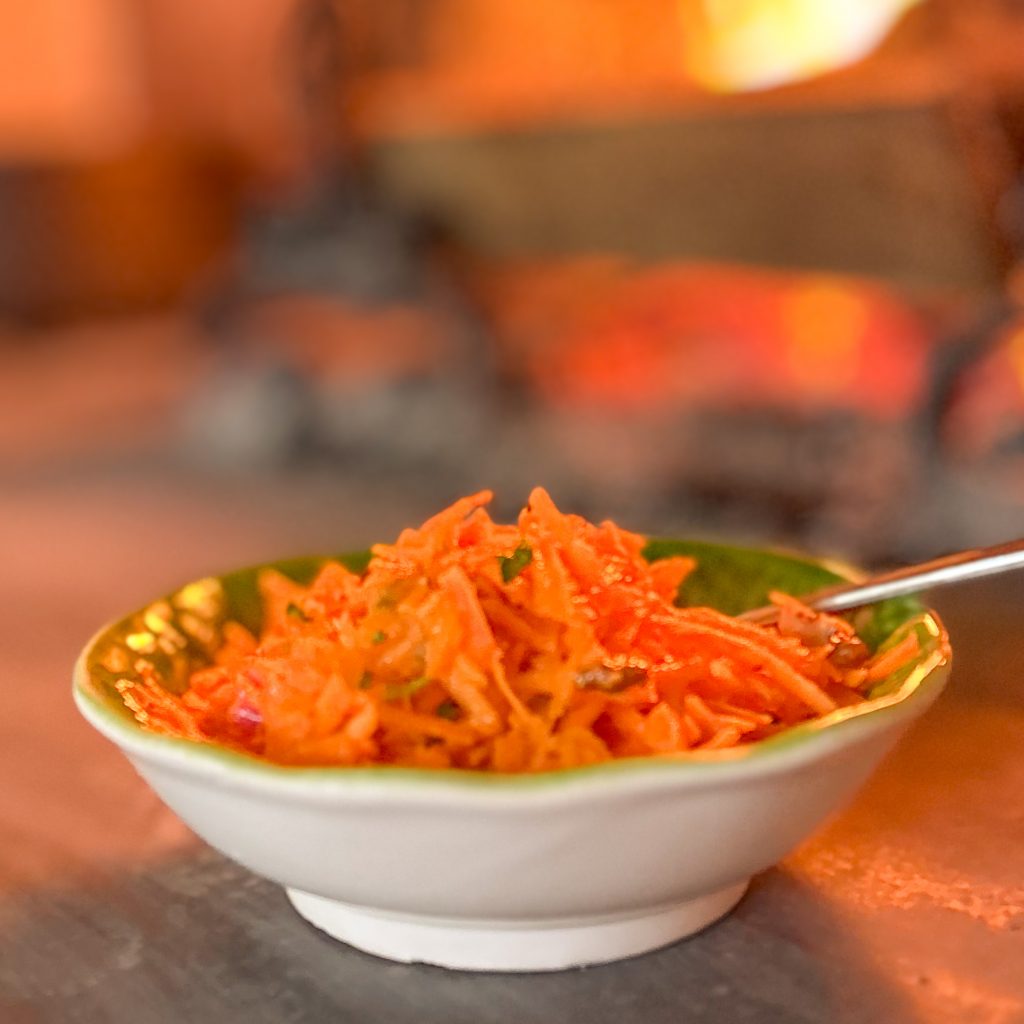
French grated carrot salad -
Multi-seed Greek yoghurt bread and the perils of mineral deficiencies
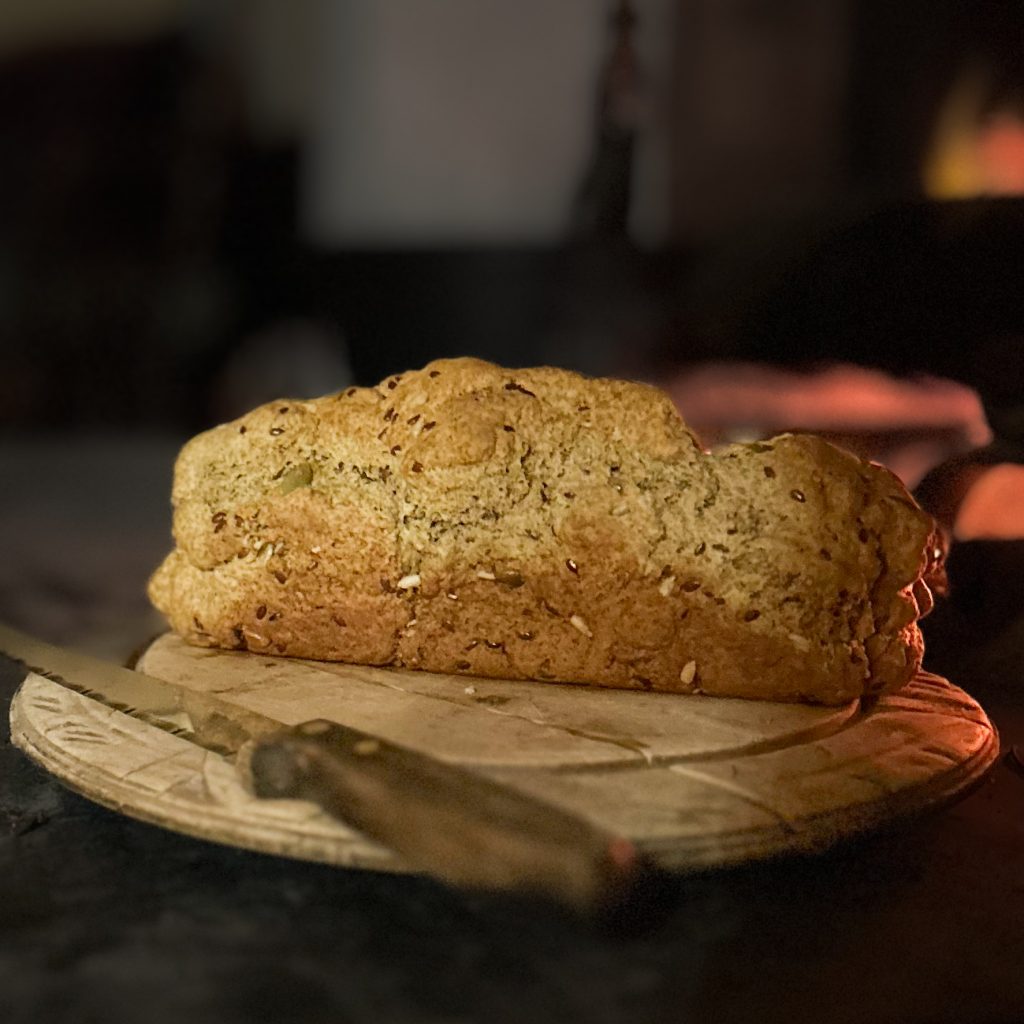
Multi-seed Greek yoghurt bread ‘You can trace every disease, and every ailment to a mineral deficiency’
This claim was made by Linus Pauling, a two-time Nobel Prize winner and reflects his deep belief in the fundamental role of nutrition, particularly micronutrients, in maintaining health. Pauling’s view stemmed from his pioneering work in biochemistry and later his advocacy for orthomolecular medicine, which aims to achieve optimal health through proper molecular balance in the body.
While Pauling’s claim is perhaps exaggerated, it highlights an essential truth: minerals are vital for countless physiological functions. Minerals such as calcium, magnesium, iron, zinc, and selenium support enzyme activity, bone formation, oxygen transport, and immune defense. Obviously though not all diseases arise solely from mineral shortages. Genetic factors, infections, lifestyle choices, and environmental influences also play major roles in human illness.
Seeds are nutrient-dense sources of essential minerals. Pumpkin seeds are rich in magnesium, zinc, and iron and support muscle function, immunity and red blood cell production. Sunflower seeds provide significant amounts of selenium, copper and vitamin E which provides antioxidant protection and improves skin health. Flaxseeds are high in manganese and phosphorus which are vital for bone development and metabolism. Sesame seeds supply calcium, iron, and zinc, essential for bone strength and enzyme activity.
Recipe for multi-grain Greek yogurt bread
- 375g rye flour
- 12g baking powder
- 4g sea salt
- 360g Greek yogurt
- 2 eggs
- 30ml olive oil
- 50g mixed seeds (flaxseed, sunflower, sesame, pumpkin seeds…)
Preheat the oven to 180°c and prepare and grease a bread tin. Put the flour, baking powder and salt in a mixing bowl and add the Greek yogurt, eggs, and olive oil. Mix until well combined and smooth. Spread the dough into the prepared pan, smoothing the top. Add the seeds to the top, brush with olive oil and bake until golden brown.
-
Pickled herring and potato, troubleshooting and trouble shooting
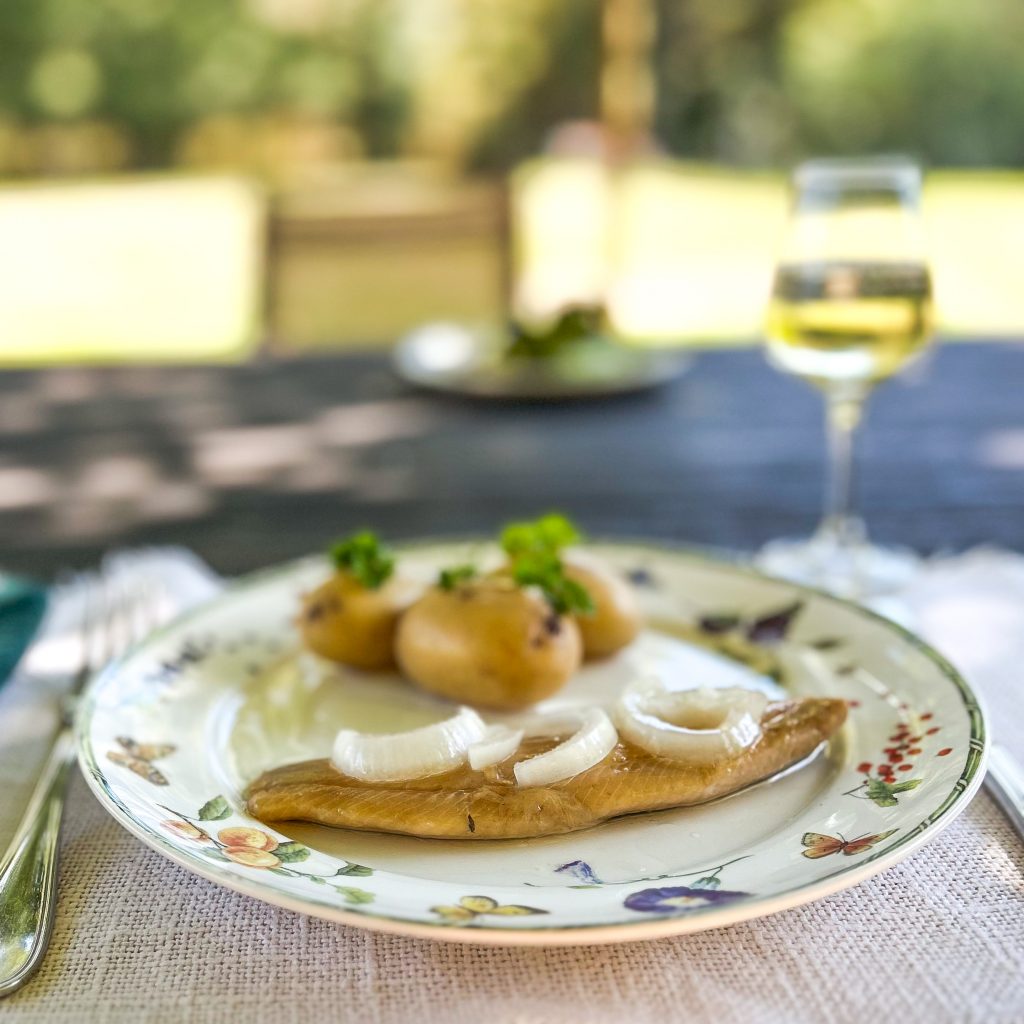
Pickled herring and potato We’re facing two big problems at the moment: wild boar destroying our grounds, and estate agents. I think one can be solved with shrewd negotiation; the other seems more stubborn and the only solution I can imagine is a hunting rifle.
So, does anyone have experience negotiating with wild boar?
And how do you handle a house sale in England without practically begging for commitment? I’ve been stuck in this process for ten months now, and am so fed up I’ve even looked into selling at auction. What irritates me most is the assumption that sellers will swallow whatever stories agents spin. Do they really think putting a house on the market automatically knocks twenty points off your IQ?
Benefits of oily fish and Omega-3 fatty acids
Oily fish such as herring, salmon, sardines, mackerel, and trout are among the best natural sources of Omega-3 fatty acids, which are essential for good health. Omega-3s play a vital role in heart health by lowering blood pressure, reducing triglyceride levels, and improving blood vessel function. They also have powerful anti-inflammatory effects that can help ease symptoms of arthritis and other inflammatory conditions.
Omega-3s are also essential for brain health. They support cognitive function, memory, and concentration, and may help protect against depression and age-related decline. Omega-3s are also important during pregnancy and early life, contributing to the healthy development of a baby’s brain and eyes.
Eating oily fish twice a week provides high-quality protein, vitamin D, and selenium, alongside these fatty acids. Together, these nutrients promote healthy skin, eyes, and overall wellbeing, supporting the body and mind.
Recipe for pickled herring and potato (serves 4)
- 8 pickled herring filets
- 2 onions
- 4 bay leaves
- Peppercorns
- 200ml olive oil
- 500g potato (new potatoes work well)
- 1 teaspoon of French mustard
- 1 soup spoon of red wine vinegar
- Seasalt and freshly ground black pepper
- Sprig of thyme
Place the herring filets in a bowl. Peel the onions, cut into rounds and place in the bowl with the herrings, adding the bay leaves, peppercorns and 150ml of olive oil. Set aside to marinate for 12 hours at room temperature. Place the potatoes in cold water, bring to a boil and cook for around 25 minutes (according to size). Mix the mustard with the vinegar and remaining oil, and add the seasoning. Cut the cooked potatoes into slices, cover with the vinaigrette, sprinkle with thym and serve lukewarm with the herrings.
-
Saffron: the sunlight in your kitchen and medicine cabinet
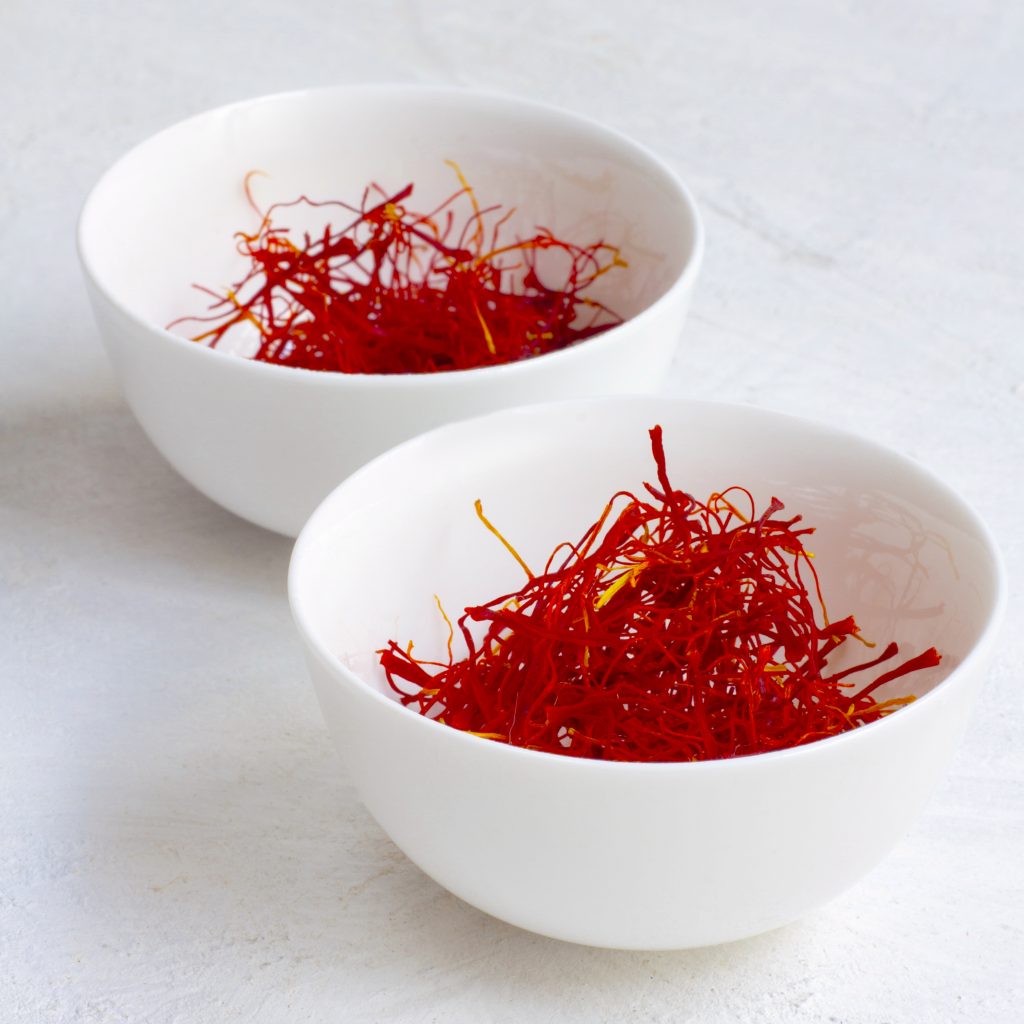
Saffron, or ‘red gold’ Saffron, which is often referred to as ‘red gold’, is one of the most precious and sought-after spices in the world. Derived from the dried stigmas of the Crocus sativus flower, saffron is renowned not only for its beautiful golden colour and earthy aroma, but also for its rich cultural, culinary, and medicinal significance.
Native to regions of Southwest Asia and cultivated primarily in Iran, India, and parts of the Mediterranean, saffron has been treasured for thousands of years. Its labour-intensive harvesting process (it requires over 150,000 flowers to produce just 1 kilo of spice) contributes to its high cost. Beyond its culinary uses in dishes like paella, biryani, and risotto, saffron has been used in traditional medicine, cosmetics, and even as a dye.
I love saffron because it’s a ray of sunshine in my kitchen. It complements sweet and savoury dishes alike, adding a warm depth impossible to replicate. A pinch in rice or a dessert transforms the dish into something luxurious; a thread in tea and you have a cup of something almost sacred. Its flavour and aroma are delicate yet unmistakable: earthy, rich and floral, with hints of honey. It enhances and elevates any food it touches. But saffron isn’t just delicious; it’s medicine too and its benefits are endless:
Antidepressant and anxiolytic effects
Saffron has well-documented antidepressant and anxiolytic properties. Several studies have shown that it may be as effective as some prescription antidepressants (like fluoxetine) for treating mild to moderate depression. The active compounds crocin, crocetin, and safranal are believed to increase levels of serotonin, dopamine, and norepinephrine in the brain.
Antioxidant powerhouse
Saffron contains powerful antioxidants including crocin, crocetin, safranal, and kaempferol. These help protect cells from oxidative stress, reducing damage caused by free radicals, one of the key factors in aging and chronic disease. Its antioxidant action also protects against oxidative damage to heart tissue.
Anti-inflammatory properties
Saffron has natural anti-inflammatory effects, helping to reduce inflammation at a cellular level. This makes it potentially useful in conditions where chronic inflammation is a contributing factor, such as inflammatory bowel disease, diabetes, rheumatoid arthritis and cardiovascular disease.
Cognitive support and brain enhancement
Research suggests saffron may improve memory and cognitive function. It shows promise in delaying the progression of neurodegenerative diseases like Parkinson’s and Alzheimer’s disease due to its antioxidant and anti-inflammatory effects.
PMS and menstrual support
Saffron has traditionally been used to ease menstrual discomfort and regulate cycles. Clinical studies have shown that it can reduce PMS symptoms such as irritability, cramps, and bloating.
Sexual health and libido
In traditional medicine, saffron has been used as an aphrodisiac. Modern studies back this up, showing improvements in sexual function, particularly in individuals experiencing antidepressant-induced sexual dysfunction.
Eye health
Saffron may help protect against age-related macular degeneration (AMD), one of the leading causes of vision loss. Crocin is believed to improve blood flow to the eyes and protect retinal cells.
Weight management and metabolism
Some studies suggest saffron can help curb appetite and reduce snacking, possibly by enhancing serotonin activity. It may also assist in regulating blood sugar levels.
Immune support
Thanks to its antioxidant, anti-inflammatory, and antimicrobial effects, saffron helps support the immune system and protect the body from infections and environmental stressors.
Digestive health benefits of saffron
Saffron’s bioactive compounds contribute to its soothing, anti-inflammatory properties that help support a healthy gut in multiple ways:
Saffron has mild carminative properties, meaning it can help reduce gas, bloating, and cramping. It helps relax smooth muscle in the gastrointestinal tract, which can ease general digestive discomfort. Saffron aids digestion and nutrient absorption by stimulating the secretion of digestive enzymes. It may also support healthy bile production, which is essential for breaking down fats.
Recent research suggests that saffron has prebiotic effects, helping support a healthy gut microbiome, which is so crucial for digestion, immune health, sleep, and mood regulation. Animal studies suggest that saffron protects the stomach lining and reduces ulcer formation, thanks to its anti-inflammatory and mucosa-protective effects.
I have been using these saffron drops for about six months now. The quality is second to none, grown and produced in France, and they are now shipping overseas.
-
Kickstart your health in September

The storks arrive On Saturday evening we were visited by scores of noisy storks, as they took a pitstop on their migration route. Storks fly from Alsace to Africa for the Winter, leaving France between the end of August and September. They hung out for about half an hour in the setting sun, on a couple of oak trees close to the house, seemingly unfazed by the chaotic dinner party taking place on the terrace beneath.

A pitstop in the oak tree While the storks migrate, September offers a natural opportunity to reset, refocus, and adjust our routines; the arrival of Autumn is a great time to implement changes that support physical, mental, and emotional wellness.
My written recommendations following a natural health consultation are obviously different for everybody, but there are few things that are fundamental for good health and vitality that I recommend to almost everyone, with very few exceptions.
Sunlight!
One of the most powerful, yet underrated, ways to optimise your health is to expose your eyes and skin to natural sunlight as soon as possible after waking. Morning sun anchors your circadian rhythm, helping to regulate sleep, hormone production, and mood.
Natural light in the morning tells the brain to reduce melatonin (the sleep hormone) and boost cortisol (in healthy amounts), which helps you feel alert and energized. Just 15 minutes of morning sunlight, ideally before 9am, can set the tone for your day and night. The morning light also assures that your body is primed to start producing melatonin later in the day, in preparation for sleep.
Avoid sunglasses and allow the light to enter your eyes indirectly (never look directly at the sun), and if possible, combine your morning light with gentle movement such as a walk, stretch, or breathing exercises. Stepping outside in the morning might be the simplest, cheapest yet most significant change you can make to get better sleep.
In northern latitudes, at this time of year, you don’t need sunscreen. In fact, at any time of year, you only need it if you’re going to be exposed at peak burning times. Too much sunscreen not only prevents the skin from producing vitamin D, it also disrupts the skin’s microbiome. I realise this is controversial, but don’t take my word for it, instead listen to what the dermatologist, Dr Véronique Bataille, has to say.
Replenish!
Mornings can be taxing on your adrenal glands, especially if your body is running on stress hormones. An adrenal cocktail, a simple blend of vitamin C, sodium, and potassium, can help nourish and support your adrenal health. This is my recipe. Failing that, a good electrolyte supplement will also do the job.
Move!
Move regularly throughout the day, and try to do some form of sustained exercise (at least 30 minutes) five or six times a week. This can be anything from walking, cycling, swimming to dancing, strength training, or yoga. Do whatever you enjoy and feels sustainable for you.
Frequent movement throughout the day helps improve circulation, reduce stiffness, and boost energy levels, especially if you spend long hours sitting. And regular sustained exercise strengthens the heart and lungs, improves muscle tone and flexibility, supports healthy weight management, and plays a crucial role in reducing the risk of chronic conditions.
Exercise also has great benefits for mental health; it reduces stress, anxiety, and symptoms of depression, while enhancing mood, focus, and sleep quality through the release of endorphins and other brain-boosting chemicals. Consistent movement and exercise are among the most effective and accessible ways to support both physical vitality and emotional well-being.
Eat!
One of the most important steps you can take for your health is to prioritise whole, unprocessed, nutrient-dense foods. While modern medicine has its place, many chronic conditions can be improved, sometimes even reversed, through dietary changes. Include some form of protein at all meals, especially breakfast. Focus on seasonal vegetables, wild-caught fish, grass-fed meat, organic fruit, and fermented food (kimchi, kefir and sauerkraut).
As obvious as this sounds, eat only when hungry! So often people reach for food as a crutch when they’re bored, tired, stressed or in need of comfort. And remember that you will only stop feeling hunger when you have satisfied your protein requirements.
Highly processed seed oils (rapeseed, corn, sunflower…) are inflammatory and contribute to oxidative stress in the body. Replace them with traditional fats such as extra virgin olive oil, butter or ghee, coconut oil and duck fat.
The Mediterranean diet, rich in healthy fats along with vegetables, legumes, nuts, fish, and herbs, is one of the most researched and beneficial dietary patterns. It supports heart health, cognitive function, and longevity. Your diet doesn’t have to be perfect, but you should really move away from ultra-processed and industrial foods.
Breathe!
The way you breathe directly affects your nervous system. Mouth breathing contributes to stress, poor sleep and dental issues. Nasal breathing, on the other hand, supports proper oxygenation, nitric oxide production, and nervous system regulation. Aim to breath slowly through your nose, with your lips sealed. Methods such as box breathing, alternate nostril breathing, or mouth taping can help retrain your breathing. See the Buteyko Method.
Relate!
Loneliness is as detrimental to health as smoking. Humans are wired for connection, so try to establish meaningful connections with people who uplift, challenge, and inspire you. Make time for proper conversation, shared meals, acts of kindness… Health isn’t just about what you eat or how you move, but also how supported and seen you feel.
Banish!
Just as some people feed your soul, others drain it. Emotional vampires (people who constantly criticise, manipulate, or demand) can sabotage your mental and physical health.
Make a conscious effort to distance yourself from toxic dynamics by setting boundaries, reducing contact, and prioritising people who respect and support you.Avoid!
If sunlight is your friend in the morning, then darkness is your healer at night. Exposure to artificial blue light from screens (phones, TVs, laptops) in the evening suppresses melatonin production and interferes with your body’s ability to wind down and subsequently sleep.
Ideally, aim to turn off screens at least 1–2 hours before bed. If that’s not practical, use blue light-blocking glasses or switch your ‘phone to ‘night shift’ to reduce blue light exposure.Sleep!
Try to be in bed before 11pm and aim for at least seven hours of sleep. It’s during sleep that your body repairs tissues, detoxifies, regulates hormones, and consolidates memory. The hours before midnight are especially restorative due to the natural circadian biology of melatonin and growth hormone production. Shortchanging sleep is like trying to run a race with no fuel; you may function, but you won’t thrive.
-
Pineapple and strawberry cake and Quasimodo returns from London
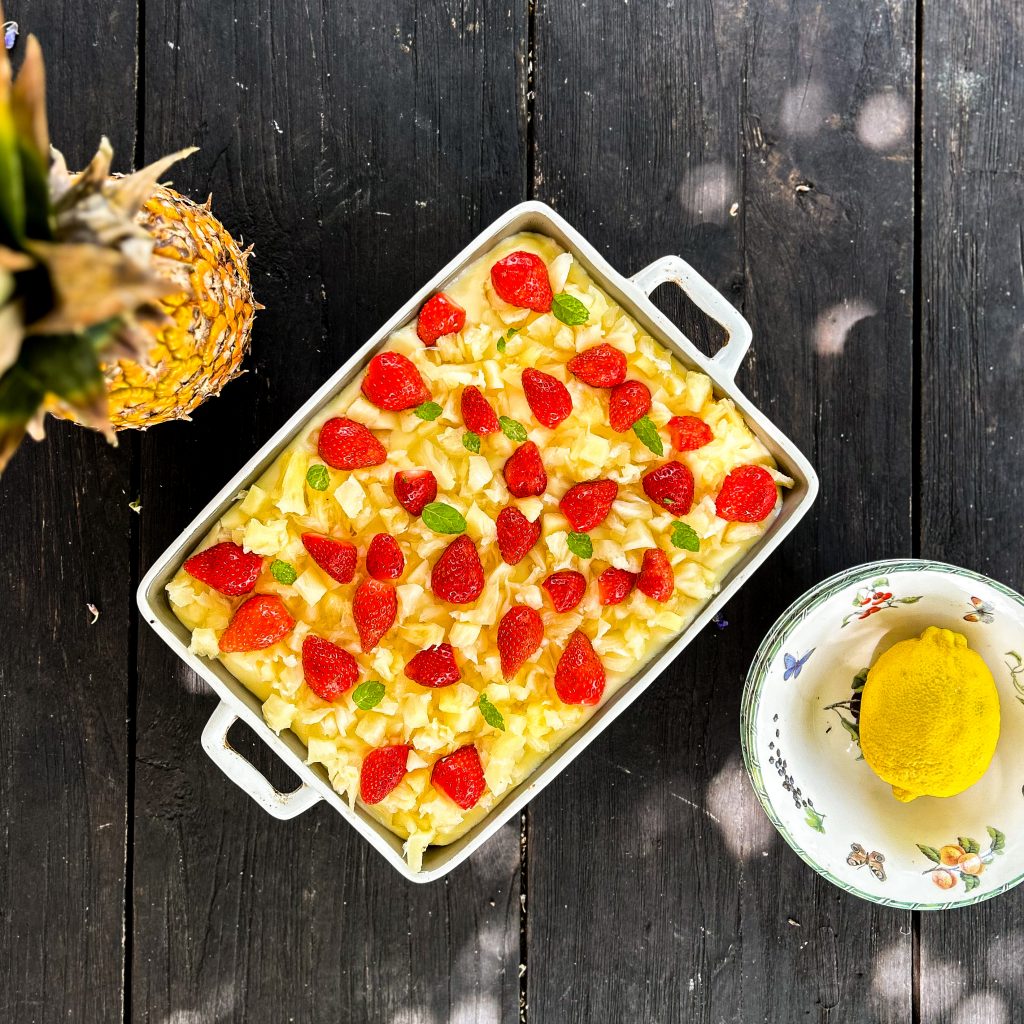
Pineapple and strawberry cake Earlier this month, I drove from my home in southwestern France to St Malo, took the ferry to Portsmouth, and then headed to London. This was part experiment, part necessity: would I rack up as many fines in a French-plated car as I usually do in a hire car? Watch this space, they’ve yet to arrive!
Driving in the UK is like playing a complicated video game on nightmare mode. While trying to dodge potholes the size of small craters, you’re squinting nervously at speed limits that flicker up and down like bonus levels. One minute it’s 70mph, the next it’s 40, then 20, then 70 again, for absolutely no obvious reason. Perhaps just someone having a bad day? And the radars! I stopped counting at 42 between Portsmouth and London.
Roadworks pop up like surprise boss fights, and redundant cones stretch to infinity. Then the ultimate challenge: the giant roundabout, where hesitation is weakness and eye contact is a full-blown declaration of war. Throw in numerous one-way systems, a bit of rain, fog, and enough traffic to make you question your life choices, and you begin to wonder why you left home.
And don’t get me started on smart motorways. Are they sentient? Do they want to chat about philosophy or mathematical theorem? I’m not convinced by their intellectual credentials, but they certainly intimidate me no end.
After a hot, heavy, and emotional week of clearing out my mother’s house, it wasn’t just driving that was in nightmare mode; my poor body was too, and I seriously wondered whether I’d manage the return drive.
Wholewoman holistic pain relief
Enter Sarah, my guardian angel! Sarah is a lovely lady who came to collect a piece of furniture. She noticed me hobbling, groaning and wincing when I helped her move a piece of furniture, and said she thought she could help. She generously made time for me a couple of days later, and worked with me for nearly three hours. I was amazed by the transformation: from a limping, lopsided wreck to upright, mobile, and pain-free for the first time in months.
What I really appreciated about Sarah’s therapy is how holistic and empowering it is. As a former chronic pain sufferer, she really understands. She’s empathetic, skilled, and committed to helping people help themselves. Her approach is multi-disciplinary and in my case, she used massage, lymphatic drainage, red light therapy, breathing and movement exercises, and gave me practical tips to stay on track. I will be following up with her online very soon. You can find her here: www.wholewoman.club.
This is a perfect summer dessert. It’s light and fresh and the rum makes it deliciously decadent!
Recipe for pineapple and strawberry cake (serves 6-8)
For the sponge base:
- 3 eggs
- Vanilla essence
- 150g granulated sugar
- 150g flour
- 1 teaspoon baking powder, 1/2 teaspoon bicarbonate of soda
- 80ml rum
For the topping:
- 500ml milk
- 1 soup spoon cornflour
- 2 egg yolks, beaten
- 70g sugar
- Vanilla essence
- Fresh pineapple, cut into cubes
- Strawberries (or other red fruit) to decorate
Prepare a 28cm cake tin and preheat the oven to 180°C. Combine the eggs, vanilla essence and granulated sugar until pale and fluffy. Add the flour, baking powder and bicarbonate of soda. Pour the mixture into the cake tin and bake for 20 minutes. Pour the rum over the cake and set aside.
Begin the custard topping by incorporating the cornflour into a small amount of milk and then adding the egg yolks. Pour the remaining milk into a large saucepan, add the sugar and vanilla essence, beat and bring to a simmer. Combine with the cornflour mixture and beat until the mixture thickens.
Pour the custard topping over the rum-soaked cake, and garnish with the pineapple and strawberries. Chill for at least 12 hours before serving.
-
Kombucha, bossy, big brother Britain, and dead moles

Lemon and ginger kombucha 
I lived in London for the first 22 years of my life, and managed to dodge arrest. Admittedly I resorted to mild flirtation on occasion, but still, my point stands. In the past five years, every single time I go back — which is very frequently — I seem to break at least one law, more often several, and mostly inadvertently.
I’ve always considered France to be far more authoritarian than the UK; in reality it’s bordering on a police state. Having said that, in France, it is generally accepted that laws are made to be broken. By comparison, in the outwardly-welcoming UK, you are likely to be breaking ‘stealth’ laws without even knowing. And these ‘stealth’ laws have a life of their own and multiple at an alarming rate.
Every single time I am in London, in a hire car, I get at least one parking ticket, and one speeding ticket. Even using Satnav/GPS, it’s far too easy to break the speed limit. WTF is it with all the 20mph zones splattered everywhere? It’s dangerous too; I spend more time nervously glancing at the speed limit on Waze than I do looking at the road! And the so-called ‘smart roads’ emit very uncomfortable, tyrannical vibes.
When I went in June, I outdid myself with a parking ticket, two speeding tickets and a threat of a £1,000 fine from TV licensing (totally unwarranted — they just didn’t believe there were no televisions in a five bedroom house). The worst thing is, the parking fine was for stopping, not even parking. What happens if you break down? Do you get fined for that too?
I start to feel guilty before disembarking from the plane now. It’s unnerving and I hate it. Next month I’m driving to London. Watch this space for details of the havoc I’ll create with French number plates and a left-hand drive car!
I know of several laws I’ll be breaking before I even get there: It’s apparently illegal to carry a plank of wood along a pavement, and it’s illegal to be drunk in a pub. I’ll certainly do the former as I’m in the process of emptying the garage of my mother’s house, and possibly the later when drowning my sorrows over all the fines I’ll be accumulating!
Another thing that is unnerving me at the moment, is Java’s insistence on trailing a dead mole everywhere with her, like a security blanket. It’s not too bad when she and her ‘cuddly toy’ are outside, but the other night she brought it into bed with her (I want to point out that I hadn’t realised, or I’d have confiscated it!). Still, luckily for Java I’m very easy-going and won’t be arresting her for molicide. That said, I am trying to wean her off the dead mole with something a little less putrid!

Health benefits of kombucha
Kombucha is a fermented tea that offers health benefits, primarily due to its probiotic, antioxidant and bioactive compounds.
Gut health is improved as kombucha’s probiotics help balance your gut microbiome, benefiting digestion, and aiding constipation, diarrhea and symptoms of irritable bowel syndrome. Kombucha also supports immune health as it contains antioxidants and B vitamins that help protect cells from damage. The fermentation process increases antioxidant levels in the drink and helps protect against cell damage linked to chronic illnesses.
Compounds that are formed during the fermentation process can help combat harmful bacteria and may help liver detoxification. Kombucha also helps regulate blood sugar levels, and reduces fat accumulation.
Recipe for kombucha (makes 1 litre)
Ingredients:
- 1 litre water (preferably filtered)
- 2 tablespoons black or green tea (loose or in tea bag form)
- 80g cane sugar
- 1 SCOBY (kombucha culture)
- 100ml previously fermented kombucha (starter)
Equipment:
- Large glass jar (at least 1 litre capacity)
- Clean cloth and rubber band to cover the jar
- Airtight glass bottle (optional for second fermentation)
Bring the water to a boil, add the tea and steep for 15 minutes. Remove the tea (either using a tea strainer, or by removing the teabags), and dissolve the sugar in the hot tea. Allow the tea and sugar mixture to cool at room temperature. Pour the cooled tea into the glass jar, and add the starter kombucha and SCOBY. Cover with the cloth and secure with the rubber band.
Leave the mixture to ferment at room temperature, out of direct sunlight, for 7-10 days. Taste after a week and leave to ferment longer if you want more acidity/less sweetness. When the kombucha is ready, remove the SCOBY for your next batch. Pour the kombucha into bottles and ferment a further 2-3 day for added fizziness before refrigerating.
The kombucha will now be ready to drink. If you would like flavoured kombucha, you should add the desired fruit, herbs or spices just before bottling.
Ideas for flavours:
- Lemon and ginger
- Strawberry and basil
- Raspberry and lime
- Peach and thyme
- Mixed herbs
- Mojito
- Apple and cinnamon
- Orange and mint
- Vanilla and orange zest
- Pineapple and raspberry
- Chai spices
Use fresh fruits and herbs for the best flavours, and bear in mind that these should be added after the initial fermentation, during bottling, for best results.
-
Naughty but knife at the airport, and reclaiming your health in midlife

The Gironde Estuary and Médoc vineyards I’m writing this from Bordeaux airport, where once again, my flight is delayed five hours due to technical problems. Get your act together BA!
My son, Léo, who always mocks me mercilessly for getting stopped by airport security (I fit the drug mule profile to a T), got his comeuppance today. The x-ray machine flagged a knife at the bottom of his computer case. It wasn’t an innocuous penknife either; it was a really heavy-duty ‘don’t mess with me’ sort of switchblade, the sort you would expect to come across in a dark alley at three in the morning. Security took him aside and asked him about it—interrogated him really—and he explained that he’d forgotten it was there, and that he mostly used it to trim the grapevines and slice his lunchtime chorizo sausage! They confiscated the knife and let him go, presumably having reached the conclusion that a potential terrorist probably wouldn’t spontaneously roll out the vine and chorizo excuse.
I exchanged my Mother of a Terrorist hat for my Natural Health Coach hat and had a conversation with Tamsin Jardinier of Unfolding Conversations, on the topic of reclaiming your health during midlife.
Tamsin offers whole-centered coaching to support high-achieving women, leaders, creatives, and entrepreneurs who are ready to reimagine life and work to create success on their own terms, and live a life they truly love.
-
White fish with lemon and parsley sauce and Ikea for turtle doves

White fish with lemon and parsley sauce I adore doves and the gorgeous turtle dove lovebirds from last year are once again back on our terrace. They’re beginning to make their nest for the summer, but it’s not without complications. They seemed to bicker (quite loudly) for a few days about where the said nest should go; location, location, location isn’t just for humans!
They now appear to have agreed on the right place, and enjoy twig shopping while we’re sitting on the terrace eating. As their future nest is perched in the wisteria directly above the table, it means that our plates end up seasoned with bits of twig and dead leaves. Luc took pity, because more twigs were dropped than positioned, and placed a small plank of wood under the soon-to-be nest, moving fallen twigs from the floor onto the plank. I think he might add some nuts and bolts, and perhaps some simple instructions Ikea-style, because so far, things are looking very precarious.

Turtle dove taking a rest from his construction works This lemon and parsley sauce works well with any white fish. I used hake.
Recipe for white fish with lemon and parsley sauce (serves 4)
- 15g butter
- 1 shallot, chopped
- 1/2 fennel bulb, chopped
- 480g fresh white fish
- 150ml dry white wine
- 150ml vegetable stock
- Sea salt and freshly ground black pepper
For the sauce:
- 50g butter
- 40g plain flour
- 500ml milk
- Small bunch of parsley, finely chopped
- 1 lemon, juiced
- Sea salt and freshly ground black pepper
Melt the butter in a pan over a medium-low heat, then add the flour. Stir for a few minutes until a paste forms. Gradually pour in the milk, stirring continuously until all the milk has been incorporated and the sauce coats the back of a spoon. If the sauce is lumpy, stir rapidly a few minutes more. Bring to a simmer and bubble for 1 min. Remove from the heat and stir through the parsley. Add the lemon juice and seasoning.
Place the butter in a medium frying pan and melt, add the chopped shallot and fennel and cook until translucent. Add the fish, white wine and stock and bring to a gentle boil for about five minutes, or until the fish is cooked. Strain the fish and season, then serve with the sauce.